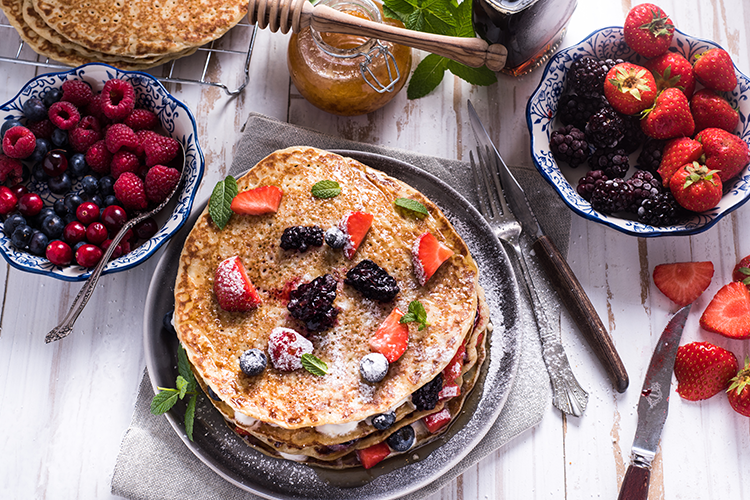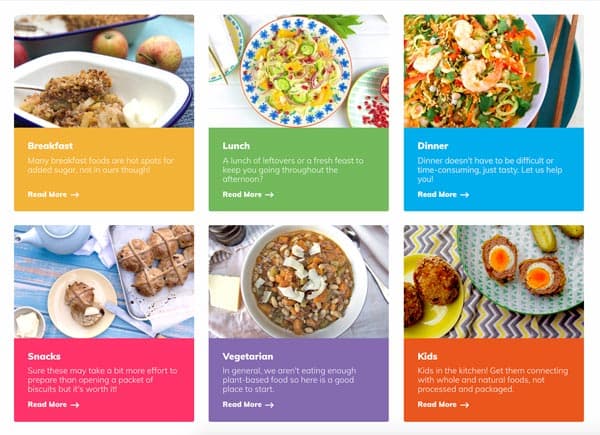Blog
The positive and not so positive – Getting real with fats and carbs
 So, you want to feel good, lose weight, pump iron, run a start-up, parent 3 rescue dogs, whilst being the most amazing partner/child/friend ever. And we all know that food is fuel. But where should we get that fuel from?
So, you want to feel good, lose weight, pump iron, run a start-up, parent 3 rescue dogs, whilst being the most amazing partner/child/friend ever. And we all know that food is fuel. But where should we get that fuel from?
Fats and carbohydrates. These two macronutrients are the benefactors of energy, providing our cells with glucose to power us through the day. In light of popular discussion, is a high fat low carb, or a low fat high carb approach best for our health? Let’s take a look.
Singling out a macronutrient as a goodie or a baddie is a simple approach when making dietary changes. However, the body does tend to like some carb, some fat, and some protein. So let’s take a look at the good and the bad when it comes to consuming carbohydrates and fats, in order to make an informed choice when fuelling our bodies.
The carbohydrate lowdown
Carbohydrate is an extremely broad term for a variety of foods that, for the most part, become glucose, a source of fuel for our body’s cells. However, they also acts as food for our wee gut bugs (and the happier they are, the happier you are), and keep the activity of the digestive tract on track. Technically, carbohydrates fall under to major groups – simple and complex. Here is a breakdown for you:
Simple Carbohydrates
- Monosaccharides: Fructose, Galactose, Glucose
- Disaccharides: Lactose, Maltose, Sucrose
Complex Carbohydrates
- Ogliosaccharides: Raffinose, Stachyose
- Polysaccharides: Starch, Glycogen, Cellulose, Fibre
Now, our body needs carbohydrates for fibre (insoluble and soluble), and also for glucose. If it doesn’t receive glucose through diet, it will create its own from fat and eventually protein. So regardless, you will always have glucose available for your little cellular engines that give us power to get through each day.
However consuming large amounts of refined, carbohydrates – high in simple carbohydrates – sends blood glucose levels soaring, well above than what is needed to fuel our cells. The glucose begins to lose its sweet mind, as it wants to fulfill its duty and power up some cells! Insulin is produced in high amounts, to remove the glucose from the blood before it causes too much damage to the blood vessels. The quick-fire reaction of insulin cause blood glucose levels to drop, we crave food to supply us with another quick hit of glucose, and so the cycle begins, and can eventually lead to insulin resistance.
It is the TYPE of carbohydrate, not the amount of carbohydrate we need be concerned with. Therefore, get a majority of your carbohydrate fix through vegetable, fruit and some whole grains. Sure, there may be some simple sugars in there, but these are packed in with fibre to slow the release of glucose into the blood stream, and mitigate the extreme reaction of the pancreas to pump out huge amounts of insulin.
Power of fat
Fats – no longer the dietary sin (thank goodness) it once was. It makes food super tasty, and has an array of health benefits when from whole food sources. Whilst fat does not make you fat, per se, like carbohydrates it is the TYPE of fat that will impact the body positively or negatively.
The three main types of fats are saturated, monounsaturated and polyunsaturated, broken down as follows:
- Saturated: stable at higher cooking temperatures, and solid at room temperature. Medium chain triglycerides (found in coconut oil) fall under this category, and are good for people who find it difficult to tolerate fat, as it bypasses much of the enzymatic breakdown process need by other fats, and used by the liver to be burned for fuel.
- Monounsaturated: liquid at room temperature, and common to the Mediterranean diet. Sources include olive, avocado and nuts.
- Polyunsaturated: Divided into omega-6 and omega-3 fats, these are ideally consumed in a 1:1 ratio. A Western diet however, consumes a 16:1 ratio! In high amounts, omega-6 fatty acids are inflammatory. They are also become the nasty trans-fats when used for deep frying, creating all kinds of nasties inflicting damage on our bodies.
And let us not forget, ‘low fat’ usually indicates added sugar. If you can tolerate full fat versions, don’t do it.
The positive and not so positive
So what do we choose to eat? People are each very different, with different dietary requirements, but generally speaking, these are the positives and the not so positives of the carb and fat worlds:
CARBOHYDRATES
| Positive | Complex carbohydrates
Vegetables (including starches) Fruit Beans and legumes Whole grains, including: · Barley · Whole wheat, wheat berries · Millet · Buckwheat · Spelt · Oats · Amaranth · Quinoa · Rice (brown, basmati, wild)
|
| Not so positive | Simple carbohydrates
Processed and refined versions of: · White flour · White sugar · Corn · Rice · Potato Foods containing these include pastries, lollies, soft drinks, crisps. |
FATS
| Positive | Olive oil
Coconut oil Flaxseed Avocado Macadamia Sesame
Also to consider · Where possible, buy extra virgin, first cold pressed. · Buy oils in dark, glass containers · Avoid fats that are solid at room temperature, except coconut oil, ghee, and unsalted organic butter · Avoid storing oils near heat and light. If possible, store in the fridge.
|
| Not so positive | Oils stored in plastic and/or clear bottles
Margarine Lard Trans-fats Limit processed and refined oils such as: · Canola Oil · Corn Oil · Soybean Oil · Vegetable oil · Peanut Oil · Sunflower Oil · Safflower Oil · Cottonseed Oil |
Basically, keep the foods whole and as unprocessed as possible. Think about what the grain or the oil may have looked like in its original form – it must take a lot of work to squeeze all that oil out of canola; but a lot less work extracting oil from an olive.
The ratios
Recommended ratios of having a majority of the plate filled with grain–based carbohydrates are shifting. As mentioned, it isn’t about the amount of carbohydrates, but the type. Carbohydrates in the form of vegetables, and some fruit, should fill the majority of a meal. (1,2) The rest of the plate can be filled with healthy, high quality proteins and fats, and some whole grains.
Just eat real food
Essentially, as we always say here at That Sugar, just eat real food. Look at the quality of the foods, over the quantity of a particular macronutrient. If we can limit the intake of processed foods, we may be able to stop focusing on macronutrient ratios so carefully, all the while supporting ourselves in our ever-so-busy lifestyles.
References:
- HSPH 2016, Healthy Eating Plate & Healthy Eating Pyramid, Harvard School of Public Health, viewed March 2016
- Nutrition Australia 2015, Healthy Eating Pyramid, viewed March 2016











